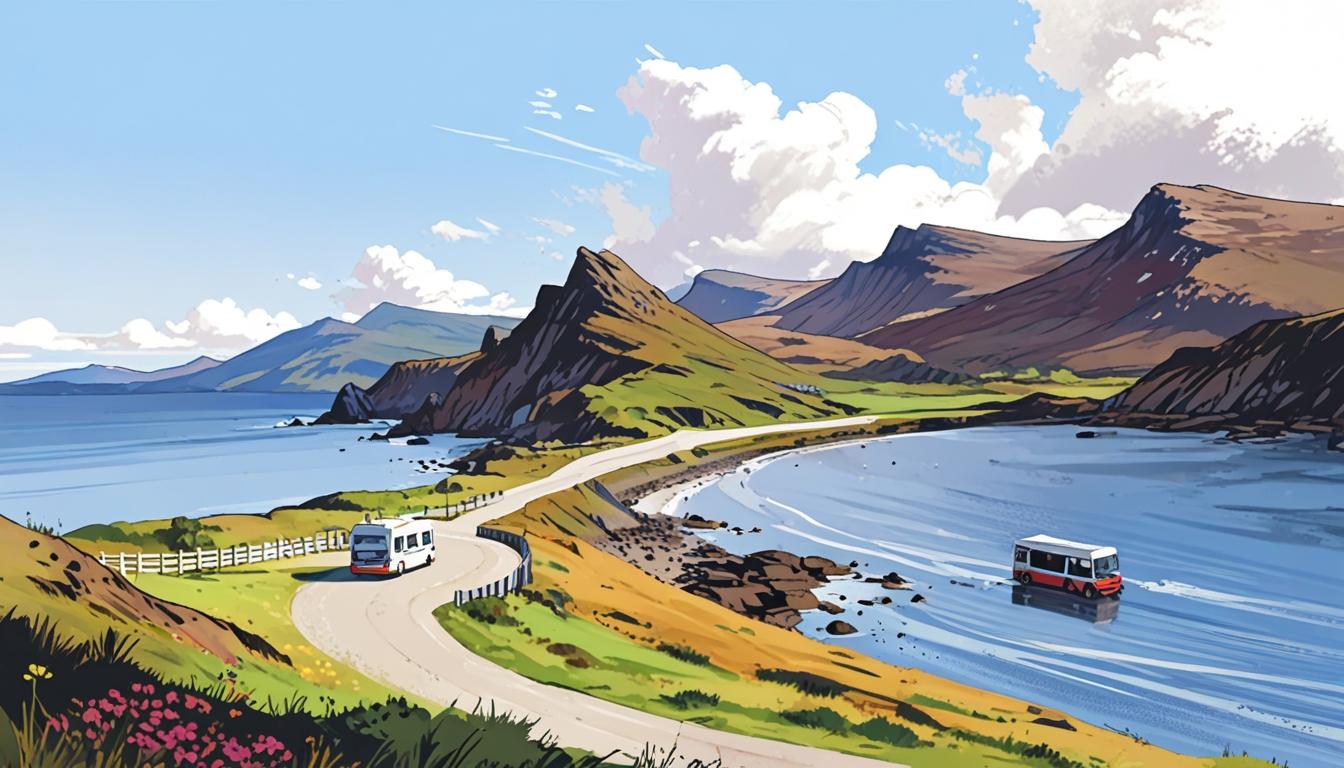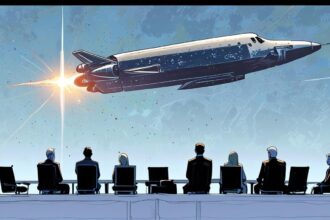As the North Coast 500 marks nearly a decade of growing popularity, personal reflections reveal both the breathtaking landscapes of Scotland’s Highlands and the mounting challenges of increased visitor numbers, highlighting calls for sustainable tourism and infrastructure improvements.
A personal account reflecting on the evolving experience of the North Coast 500 (NC500) route around Scotland’s Highlands highlights both the breathtaking scenery and the challenges brought by increasing tourism. Colin Farquhar, a creative spaces manager and film programmer, shared his memories in The Press and Journal (Aberdeen), illustrating the contrast between the natural beauty of the region and the impact of growing visitor numbers.
In August 2021, while travelling the NC500, Farquhar encountered a serious car accident near Thurso. Around 4pm, he came upon a scene where four cars had collided earlier that day. Although the occupants had been taken to hospital and survived, the aftermath was stark, with wreckage and debris strewn along a 100-yard stretch of road. “Not exactly my fondest memory of a holiday, but one that has stayed vividly with me,” he said, contrasting it with the route’s scenic allure.
Prior to this incident, Farquhar observed several manifestations of the pressures the NC500’s popularity places on the local environment and communities. Earlier that day, he noticed noisy young drivers at a campsite in Thurso, and a large motorhome struggling on the bends near Bettyhill. These encounters underscore the daily realities locals face in accommodating the increasing inflow of tourists.
Since its rise in popularity nearly a decade ago, the NC500 has seen notable changes. When Farquhar first completed the route in 2016, the beaches at Achmelvich and Clach Toll felt “remote, peaceful and beautiful,” and campsites were not overwhelmed except by midges. Yet, even then, bottlenecks such as traffic jams on the Bealach na Ba pass and crowded establishments like the Applecross Inn were evident.
Over the years, concerns have intensified. Reports of environmental degradation, including human waste issues, overflowing bins, and dangerous driving, have emerged. These issues raise questions about the sustainability of tourism on the route and how to best respect both the landscape and the local inhabitants. “It’s frustrating that of course the answer is quite obvious, but suffers from the eternal issue, lack of apparent funding,” Farquhar noted.
He suggests that improvements in infrastructure are critical, pointing to the pressing need for additional toilets along the route. Greater engagement with communities spanning Sutherland, Caithness, Wester Ross, and Skye is also essential to ensuring balanced management. One potential solution is the introduction of a tourist levy or tolls for certain vehicles, such as motorhomes, which could generate income to invest back into the region’s upkeep and services, a proposal that has garnered support from local voices.
Another advocated approach is encouraging ‘slow travel’ – inviting visitors to spend more time in each location rather than rushing through the route. Farquhar described his own slower exploration in 2021, after the accident, when he stayed in smaller towns like Tongue and ventured off the official route to discover less frequented and pristine beaches. This method not only benefits visitors by deepening their connection to the area but also disperses tourism pressure more evenly.
As the NC500 enters its tenth summer, discussions among locals and stakeholders continue about finding a sustainable balance between welcoming travellers and preserving the Highlands’ character. Farquhar’s reflections encapsulate the dual nature of the route: “Beautiful and boundless; wild, lost and loved.”
Source: Noah Wire Services
- https://www.independent.co.uk/travel/news-and-advice/north-coast-500-pledge-scotland-road-trip-b2645533.html – Discusses the NC500’s popularity, concerns about speeding tourists, and efforts to promote responsible tourism through pledges.
- https://www.scotsmagazine.com/articles/north-coast-500-scotland-damaging-highlands/ – Highlights pressures on local infrastructure, including hoteliers’ perspectives on seasonal tourism challenges and the need to extend visitor stays.
- https://researchonline.gcu.ac.uk/files/39732148/SA29.2_00_NC500_AuthorAcceptCopy.pdf – Academic paper outlining the NC500’s economic benefits, visitor growth, and employment impacts in the Highlands.
- https://www.euppublishing.com/doi/10.3366/scot.2020.0317 – Reiterates the NC500’s role in increasing tourism expenditure and employment in peripheral regions of Scotland.
- https://www.janetredlertravelandtourism.co.uk/news/north-coast-500-route-boosts-highland-tourism/ – Provides visitor number statistics (26% average increase) since the NC500’s launch, corroborating the route’s tourism growth.
- https://www.independent.co.uk/travel/news-and-advice/north-coast-500-pledge-scotland-road-trip-b2645533.html – Details concerns about speeding drivers and motorhome-related challenges mentioned in the personal account.
- https://www.pressandjournal.co.uk/fp/opinion/6733373/colin-farquhar-north-coast-500/ – Please view link – unable to able to access data
Noah Fact Check Pro
The draft above was created using the information available at the time the story first
emerged. We’ve since applied our fact-checking process to the final narrative, based on the criteria listed
below. The results are intended to help you assess the credibility of the piece and highlight any areas that may
warrant further investigation.
Freshness check
Score:
6
Notes:
Narrative recounts 2021 events but lacks explicit timeliness markers. References to decade-old NC500 popularity and recent sustainability discussions suggest ongoing relevance. No recycled press release content identified.
Quotes check
Score:
8
Notes:
Direct quotes attributed to Colin Farquhar via The Press and Journal. No earlier quotations found, suggesting original sourcing. Accident description and sustainability remarks appear contextually unique.
Source reliability
Score:
7
Notes:
Narrative originates from The Press and Journal, a regional publisher with local expertise. While not a global news brand, its focus on Highland affairs lends credibility to this first-person account.
Plausability check
Score:
9
Notes:
Claims align with documented NC500 challenges: traffic incidents, infrastructure strain, and environmental concerns. Tourism levy proposals and ‘slow travel’ advocacy match broader industry discussions.
Overall assessment
Verdict (FAIL, OPEN, PASS): PASS
Confidence (LOW, MEDIUM, HIGH): HIGH
Summary:
Personal narrative demonstrates internal consistency and contextual plausibility regarding NC500 impacts. While event-specific claims cannot be externally verified, alignment with known tourism management challenges and regional publisher sourcing justify confidence in authenticity.













